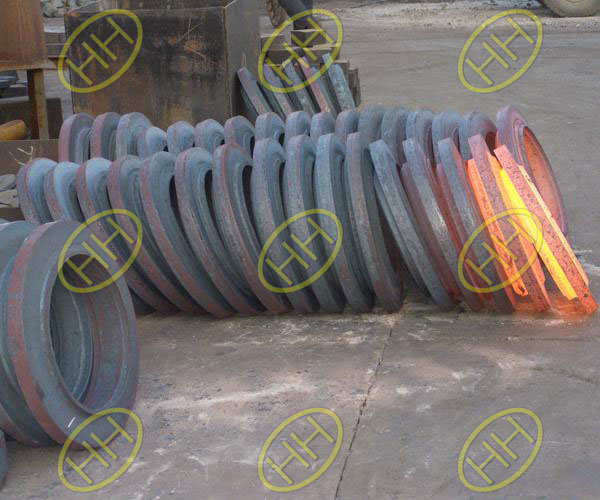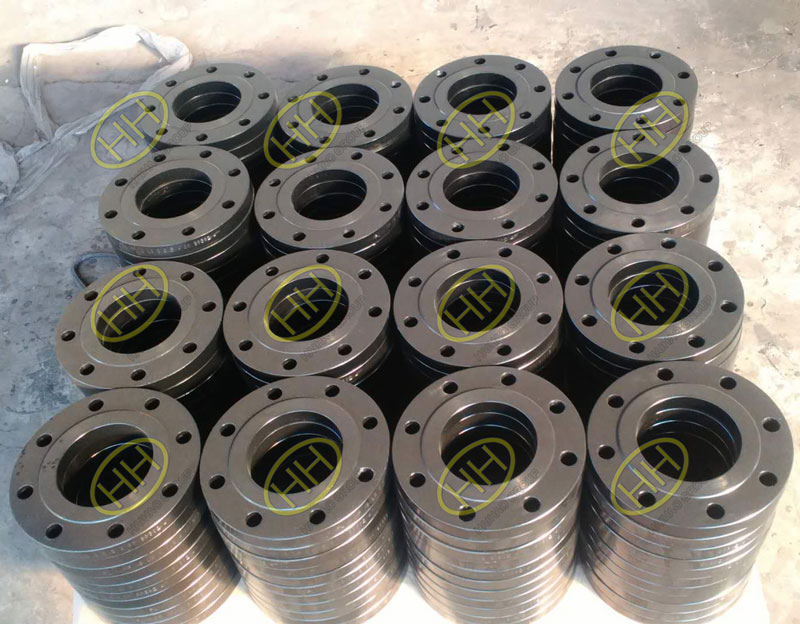What factors affect the shaping of the forging?
When the surrounding medium and atmosphere cause the surface layer of the deformed body to dissolve and form a brittle phase with the metal substrate of the forging, the deformed object will be in a brittle state. For example, titanium can absorb hydrogen to form TiH2 during melting and pouring or heating in a reducing atmosphere and pickling, making it brittle. The effect of the surrounding medium can cause the corrosion of the surface layer of the deformed body and the change of the chemical composition, which reduces the plasticity of the forging. For example, when brass is heated, annealed, and used in hot water and seawater, zinc is preferentially corroded and dissolved, leaving the surface of the forging—a layer of porous sponge-like pure copper to fail. Some media (such as lubricants) are adsorbed on deformation On the surface of metal forgings, the ability of forging plastic deformation can be improved. When the forging is plastically deformed, the result of slippage can make the surface appear many micro-steps. The lubricant penetrates to the deep along the boundary of the step or along the micro-gap formed by the surface expansion, which can make the slip process smoothly and improve. Plasticity of metals.
The influence of the degree of deformation on the lightness is related to the tendency of cracks caused by the progress of plastic deformation during work hardening and processing. During thermal deformation, due to dynamic recovery and dynamic recrystallization, the metal does not undergo work hardening, so the degree of deformation has little effect on the plasticity of the forging. For cold deformation, due to work hardening, plasticity decreases as the degree of deformation increases. From the perspective of plastic processing technology, for metals and alloys with high work-hardening strength, the degree of deformation each time should be small, and an intermediate annealing process must be added to restore the plasticity of the metal. For metals and alloys with low work-hardening strength, The degree of deformation can be larger each time. For alloys that are difficult to deform, multiple small deformation methods can be used.
The effect of dimensional factors on metal plasticity is that as the volume of the forging increases, the plasticity decreases. The main reason is that the larger the volume of the forging, the more defects are contained in the forging, the more intense the non-uniform deformation, the stress concentration at the defects of the structure is easy to cause, the source of cracks is easy to be formed, and the plasticity is reduced.
The effect of external friction on metal plasticity is that the presence of friction will cause uneven deformation of the forging. The greater the frictional force, the more serious the uneven deformation of the forging will cause some microcracks in the metal to develop during the deformation process, thereby reducing the metal’s Plasticity. Therefore, various methods should be used for lubrication in metal plastic processing. Reduce uneven deformation caused by friction and improve the plasticity of metal.
In fact, these factors affect the shaping of forgings. We should pay attention to these problems and prevent them. Do you want to take any preventive measures? Welcome to discuss it with us.Email:sales@haihaogroup.com


